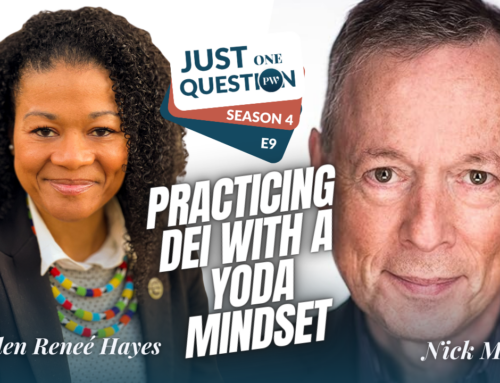This is the fourth blog in a series about storytelling – 5 in 5 days. Everyone seems to get it that storytelling is important, because we’re awash in data and information and can’t remember it all. But we do remember stories. That’s because they are how our brains work. For example, they are why we all feel that it’s safer to drive than fly, even though the statistics prove the opposite. We remember the horrifying stories of plane crashes, and forget the stats. Our brains are constructed that way.
Great Stories Let their Audiences in on the Secret Before their Characters Know
This idea is a tough one for many storytellers to swallow. Instinctively, we want to surprise our audiences with startling revelations, to keep their interest and to impress them with our storytelling prowess. But in fact, there’s nothing more delicious for a reader, a moviegoer, or a listener than to be in on the secret. This concept works in a couple of ways.
First, as the director Alfred Hitchcock realized, there are 2 ways to reveal a scene to the audience. Let’s say two people are talking in a café, about nothing much. In fact, you risk audience boredom unless the conversation is very, very fascinating. After a while, a bomb goes off. You give the audience a moment of shock and surprise. Why did that happen? Then, the scene moves on. If, instead, you let the audience know beforehand that a bomb is going to go off at some point in the scene, suddenly that conversation about nothing much is exciting, suspenseful, poignant, and fascinating. When the bomb goes off, there’s an awful confirmation. The bomb did go off! Much more compelling. The audience is still shocked, but it’s not surprised. And it’s had 10 minutes of compelling moviemaking instead of 10 seconds. The difference is dramatic tension. Too many storytellers want to surprise their audiences.
Second, there’s a deeper kind of recognition. In the third segment of the first Star Wars saga, we learn that Darth Vader is Luke’s father. Only the dimmest members of the audience are both surprised and shocked. We’ve had many hints leading up to the moment that let us in on the secret. It’s still a shock when the revelation comes to Luke, but we’re not surprised. We’re in on the secret, and we get to watch with fascination how Luke responds.
Let your audience in on your secrets. You’ll create much better stories as a result.








This is a great movie technique – horror movies wouldn’t be horrifying if the audiences wasn’t in on the secret.
Can you give me an example of how to use this in a presentation? I’m having a hard time conceptualizing how I would use this in a speech.
Hi, Michelle —
Great question. There are a variety of ways. One is simply to tell stories within your speech using the same story techniques. Another is to let audiences in on behind-the-scenes secrets that relate to your topic. How Disney creates the magic. “What most people don’t know is…” Another is to build up to a big “reveal” in the context of the talk. I saw a chemistry prof once give a riveting talk about how chemicals interact by explaining what should happen when he mixed 2 together, and then doing it. We all held our breath as the chemicals swirled, then were shocked, but not surprised, when the explosion happened. Yet another is a chapter in my next book:-)